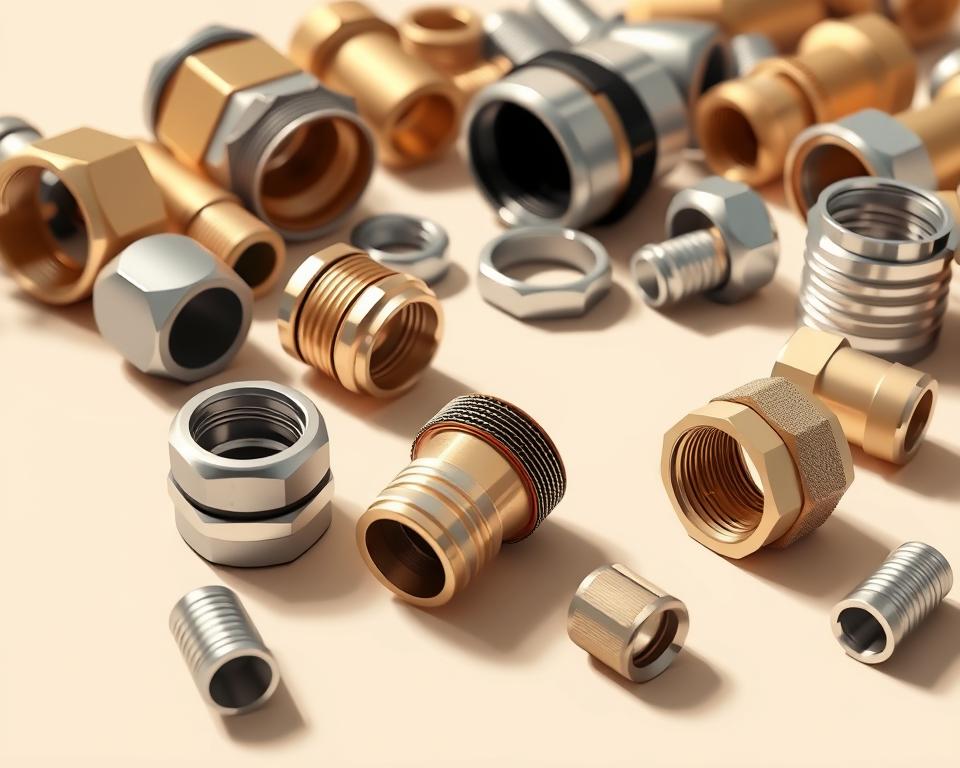Silicone Framework Sealant Manual for Constructors
Are you aware that nearly 75% of building experts rely on silicone framework adhesives for efficient weatherproof construction? These high-performance sealants are not just a trend; they have become indispensable in modern building projects for their outstanding durability and strength against weather elements.
Silicone framework sealants provide robust bonding and increased suitability with a wide range of materials. This makes them the preferred choice for constructors focused on longevity and reduced upkeep. Their effectiveness in various applications, particularly in structural connections and glazing, shows how these construction sealants have a vital function in improving the performance and security of buildings.
Introduction to Silicone Framework Sealants
Silicone structural sealants are a significant innovation in construction and construction. They offer strong adhesion and flexibility, making them vital in contemporary building design. In contrast to conventional adhesives, silicone sealants boast enduring elasticity. This is important in regions prone to shifting or expansion.
The development of framework window adhesives has been a game-changer. These adhesives are crucial for various uses, both interior and outside structures. They ensure cohesion in varied building ventures. With a history spanning years, glass adhesive are now essential for safety and appearance in architecture.
Constructors and designers trust silicone sealants for their performance and versatility. They are used in window sealing and bonding exterior connections, offering a reliable option for modern building. As we explore into the categories and characteristics of silicone sealants, it’s evident they have a crucial role in building methods.
Varieties of Silicone Adhesives
For builders and developers, it’s important to comprehend the different types of silicone adhesives. The primary categories are neutral silicone sealant and acid rubber adhesive. Each type has distinct features that impact their use, making it essential to choose the right one for a venture.
Neutral Silicone Sealant
Non-reactive silicone sealant is the preferred for delicate applications. It doesn’t release chemicals that could cause rust or damaging chemical reactions with different materials. This makes it ideal for framework window sealing, especially in bonding panes. Builders often select this sealant for dealing with metals and other sensitive materials.
Acid Rubber Adhesive
Reactive rubber adhesive is ideal for ventures with robust materials. It dries quickly, making it great for sealing spaces promptly. It’s utilized in both home and business settings where efficiency and strength are important. Developers appreciate its flexibility, but care is required when using it with materials that react badly to chemicals.
Key Properties of Silicone Framework Adhesive
Silicone structural sealants excel in building due to their standout attributes. They offer high bonding, robust weatherproofing, and exceptional durability. These qualities are crucial for constructors seeking a dependable adhesive for various applications.
Adhesion and Suitability
High-quality framework adhesives adhere strongly to materials like glass, alloys, and concrete. This versatility is vital for projects needing a strong bond across various materials. Constructors value this adhesive for its capacity to ensure a solid bond, improving the structure’s cohesion.
Weatherproofing
Engineered to endure harsh environments, weather-resistant silicone sealant stands up to UV rays, humidity, and harsh weather. Such strength ensures it continues to work effectively over time. It’s an perfect option for projects exposed to the elements or those in areas with changing temperatures.
Durability and Performance
One of silicone sealants’ key traits is their durability. They are designed to endure, even with building shifts. This elasticity and durability make them a top pick for ventures needing to adjust and endure, ensuring steady performance over their lifespan.
| Attribute | Explanation | Benefits |
|---|---|---|
| Adhesion | Strong adhesive capability to multiple materials | Ensures building cohesion and dependability |
| Weather Resistance | Protection from ultraviolet light, humidity, and temperature changes | Enhances durability and prevents sealant breakdown |
| Longevity | Ability to withstand structural movement | Provides a long-lasting and effective bond |
Uses for Rubber Sealant in Building
Rubber sealants are essential in building, particularly in structural glazing applications. They bond architectural elements like glass panes, exteriors, and curtain walls, guaranteeing both durability and beauty. A high-performance silicone sealant not only forms a robust bond but also flexes with building materials, maintaining the bond through natural movements.
Silicone products are also important in creating waterproof shields, enhancing structures’ durability against harsh weather. This is crucial for the longevity and security of buildings. Here are some notable fields of use:
- Joining different materials, such as panes to alloys or concrete.
- Forming bonds in curtain wall systems, enhancing energy performance.
- Providing waterproofing solutions for roofing and cladding applications.
- Enabling expansion and contraction in moving buildings.
- Ensuring visual design consistency in different building designs.
The distinctive combination of elasticity, longevity, and weather resistance makes top-quality rubber adhesives perfect for contemporary building needs. As constructors look for innovative options, rubber sealant is increasingly utilized, leading more secure and more efficient building practices.
| Use | Explanation | Advantages |
|---|---|---|
| Structural Glazing | Attaching glass panes to framing systems | Improved aesthetics, robust bond, flexible movement |
| Waterproofing | Protecting roofs and cladding from humidity | Waterproofing, improved longevity, energy performance |
| Bonding Dissimilar Materials | Joining substances like metal and glass | Versatility in substance suitability, strong adhesion |
How to Select the Right Silicone Structural Sealant
Selecting the appropriate rubber framework adhesive requires a thorough analysis of material kinds and weather factors. It’s essential to understand how various materials react with different sealing agents. This understanding is essential for choosing a professional-grade silicone sealant that can withstand specific stresses.
Considerations for Various Substrates
When selecting rubber adhesive, various materials require unique methods. Below is a chart detailing typical substrates and their corresponding considerations:
| Substrate Material | Recommended Sealant Type | Important Factors |
|---|---|---|
| Cement | Professional-grade silicone sealant | Bonding characteristics and drying period |
| Panes | Non-reactive rubber adhesive | High transparency and ultraviolet protection |
| Metal | Silicone joint sealant | Rust protection and elasticity |
| Timber | Hybrid silicone sealant | Moisture resistance and movement capability |
Environmental Conditions
The surroundings greatly influences the choice of sealing agent. Conditions such as extreme weather, humidity levels, and chemical exposure must be considered. An perfect sealant should keep performance across varying conditions.
- Heat Levels: Ensure the sealant can withstand the exact temperature range.
- Humidity: Choose adhesives resistant to moisture for humid environments.
- Chemical Exposure: If the area will be exposed to chemical substances, select a adhesive with appropriate protection.
For the optimal outcome, always consult producer guidelines and perform compatibility testing with substrates. This approach minimizes risk and guarantees longevity for all projects using a silicone structural sealant.
Proper Installation Techniques
Perfecting the art of sealant production installation is crucial for its effectiveness. The outcome depends on the thoroughness of substrate cleaning and the application methods used. These preliminary stages set the stage for a effective adhesive application.
Surface Preparation
Surface preparation is the cornerstone of effective silicone structural sealant installation. It’s critical that materials are meticulously cleaned, dried, and devoid of any impurities. The essential procedures for surface preparation are:
- Washing: Particles, oil, and residues must be removed. The selection of detergent should match the substrate type.
- Preparing: A primer may be required, based on the sealant and material, to strengthen bonding.
- Dehydration: Total dryness of the surface is crucial before applying the sealant, as humidity can undermine its efficiency.
Sealant Application Methods
Choosing for the right adhesive techniques is vital for superior results. The technique employed should align with the venture’s needs and the wanted finish. Popular techniques include:
- Caulking Gun: This technique is favored for its accuracy in controlling bead size.
- Trowel Application: Perfect for larger areas or when a thick sealant layer is required.
- Backer Rod Installation: Essential in deeper joints, this method regulates sealant depth and enhances adhesion.
Adherence to these application methods is important to avoid bubble formation, which can detract from the seal’s integrity. Diligence in both surface preparation and use ensures a bond that is both durable and efficient, supporting the long-term success of building endeavors.
Verification in Adhesive Application
Ensuring the standard of sealant usage is crucial for achieving performance expectations. Efficient verification techniques help builders and developers check the cohesion of their work. This involves detailed bond strength verification under various situations to determine if the adhesive bonds effectively with the surfaces it contacts.
Testing for Adhesion
Testing sealant adhesion is essential for assessing rubber adhesives. Techniques employed involve:
- Bond strength checks – a common technique to measure the bond strength between the adhesive and the substrate.
- Peel tests – helpful for verifying how effectively the sealant bonds over time.
- Real-world assessments – real-world assessments that ensure the sealant performs as expected in actual conditions.
These methods, included in the standard verification, build trust in the sealant’s bonding capacity and its suitability for a venture.
Recording and Guarantee Factors
Recording is essential in ensuring adhesive standard. It includes noting the materials used, how they were installed, and the conditions at the time of application. Thorough records aid in later upkeep and protect all stakeholders. Warranty considerations are important, offering coverage against failures and outlining the responsibilities of manufacturers and applicators. Sticking to recording methods reduces dangers from sealants that don’t meet expectations.
| Record Kind | Explanation |
|---|---|
| Installation Records | Information on the installation method, covering environment and methods used. |
| Material Safety Data Sheets (MSDS) | Info on the protection and usage of adhesives employed in the project. |
| Guarantee Papers | Terms and conditions outlining coverage against failures and failures. |
Keeping accurate info throughout the process is crucial for sealant quality assurance. Efficient verification and careful documentation ensure strong guarantee factors, resulting in successful results.
Frequent Errors to Prevent with Silicone Sealants
Many builders encounter issues with rubber adhesives that can severely affect their projects. It’s crucial to address these errors for a lasting and effective seal. Here are some typical issues to be aware of:
- Incorrect Substrate Cleaning: Failing to wash and preparing surfaces correctly can lead in poor bonding. Consistently eliminate dust, grease, or impurities before applying the sealant.
- Choosing the Wrong Type of Sealant: Various ventures require particular adhesives. Using an reactive rubber in a place where a neutral one is required can lead subpar efficiency.
- Poor Application Techniques: Applying adhesive inconsistently can create weak spots. A consistent method and uniform pressure during use are essential for a solid bond.
- Ignoring Environmental Conditions: Adhesives perform optimally within certain temperature and humidity conditions. Using them in severe situations can lower their efficiency.
- Overlooking Drying Periods: Hurrying the drying period can lead in incomplete adhesion. Consistently follow the recommended curing times for the optimal outcome.
Identifying and addressing these silicone sealant errors ensures better performance and durability in construction projects. Taking these measures can result in successful installations and minimize the need for later fixes.
| Mistake | Effect | Solution |
|---|---|---|
| Improper Surface Preparation | Poor adhesion resulting in adhesive breakdown | Thoroughly clean and ready surfaces prior to application |
| Selecting the Incorrect Adhesive | Inadequate performance in particular situations | Choose a adhesive compatible with the application |
| Incorrect Adhesive Methods | Weak points in the seal, chance of breaks | Adopt steady and uniform adhesive techniques |
| Ignoring Environmental Conditions | Weakened bond strength | Verify heat and moisture before use |
| Neglecting Curing Times | Risk of premature breaches | Adhere to the suggested curing times |
Maintenance of Silicone Structural Sealants
Guaranteeing the longevity and efficiency of rubber framework adhesives is crucial. Routine upkeep can prevent mold growth, discoloration, and adhesive breakdown. This preventive method not only maintains the structure’s appearance but also extends the adhesive’s lifespan.
Important methods for effective upkeep include:
- Routine Checks: Check for indications of wear, cracks, or bubbling every few months.
- Hygiene: Maintain the area around the adhesives tidy. Debris accumulation can cause mold and discoloration.
- Reapplication: Timely reapplication is essential when sealants indicate of degradation to maintain integrity.
- Surrounding Factors: Consider of shifting environments and their impact on bond efficiency.
Implementing these steps can significantly reduce possible issues, enhancing the structural integrity of structures using silicone-based products. This commitment to maintenance ensures a reliable and efficient sealant for structures.
Ecological Effects of Rubber Adhesives
The ecological effects of adhesives, especially rubber adhesives, has experienced a increase in focus. This heightened attention stems from the requirement to match construction methods with sustainability. The manufacture of these adhesives often involves chemical emissions, which contaminate the air and affect indoor air quality.
As the construction sector shifts towards sustainable materials, manufacturers are creating in rubber adhesives. They seek to reduce VOC emissions and develop green mixtures. These changes not only cut down on pollutants but also align with sustainable construction objectives.
Disposal of rubber adhesives poses environmental hurdles. Unlike some other options, silicone is difficult to reuse, resulting in more landfill waste. Users and constructors should seek out products marked as eco-friendly or backed by reuse programs.
| Aspect | Conventional Silicone Sealants | Eco-Friendly Rubber Adhesives |
|---|---|---|
| VOCs Emission | More pollutants | Reduced pollutants |
| Disposal | Hard to reuse | Made for better reuse |
| Mixture | Traditional ingredients | Green ingredients |
| Compliance with Standards | Varies widely | Meets green building standards |
Looking ahead, constructors and architects should favor rubber adhesives with reduced environmental impacts. Selecting these eco-friendly options can significantly lower harm to our environment. At the same time, they still offer the longevity and efficiency required in construction projects.
Contrasting Rubber Adhesives to Other Adhesives
Comprehending the variations between silicone structural sealant and other adhesive kinds is crucial for creating educated decisions in construction. This discussion will concentrate on two primary contrasts: silicone vs. acrylic sealants and rubber vs. synthetic adhesives. Each serves distinct functions in bonding uses, determined greatly by their properties and applications.
Silicone vs. Acrylic Sealants
Silicone sealants excel in elasticity and weather resistance, making them ideal for applications exposed to harsh environmental conditions. Acrylic sealants, while simpler to paint and usually lower in cost, might not provide the same level of durability over time. Important distinctions include:
- Weather Resistance: Silicone is more effective in harsh weather and humidity.
- Flexibility: Silicone can expand and shrink with building shifts, while acrylic is susceptible to breaking.
- Bonding: Silicone adheres strongly to a range of materials, whereas acrylic may have limitations.
Silicone vs. Polyurethane Sealants
In the comparison of rubber vs. synthetic adhesives, both offer great bonding. Synthetic adhesives may possess a stronger bond to many surfaces but often are lacking when exposed to harsh weather. Important factors to note include:
- Adhesion Strength: Synthetic can bond extremely effectively on various materials.
- Weatherproofing: Silicone is more likely to exceed polyurethane in intense weather situations.
- Use: Synthetic typically requires more precise blending and application than silicone.
Each type of sealant has its advantages and disadvantages, defining their fit across different projects. Creating an informed choice relies on comprehending these comparisons when choosing between silicone and other adhesives.
Upcoming Developments in Rubber Adhesive Innovation
The silicone sealant sector is witnessing significant changes, propelled by the need for modern construction options. Innovations in sealant formulations are boosting longevity while reducing environmental impact. This shift is driven by growing awareness of sustainability, leading the creation of efficient, eco-friendly adhesives.
Self-healing sealants are a groundbreaking development in this field. These materials can on their own fix minor damages, greatly extending their duration and cutting down on replacements. This satisfies the growing need for long-lasting building materials.
Constructors face the challenge of dealing with weather changes. In response, manufacturers are creating highly flexible silicone formulations. These sealants are engineered to withstand changing weather conditions without losing effectiveness. They are ideal for diverse building ventures.
The industry is also moving towards eco-friendly, performance-focused sealant solutions. Builders and architects now seek products that meet their needs and promote green methods. This trend highlights the important function of ongoing innovation in the sector.
- Auto-repair features
- Enhanced flexibility for temperature variations
- Reduced environmental impact
- Efficiency-focused mixtures
Summary and Closing Remarks on Silicone Structural Sealant
Silicone structural sealants are essential in the construction industry, providing many advantages that boost both efficiency and durability. They offer excellent adhesive properties and long-lasting seals, enhancing building longevity and strength against weather conditions.
These sealants also show notable weather resistance and versatility, making them fit for a wide range of applications. By employing top-quality rubber adhesives, constructors not only promote eco-friendly methods but also ensure their bonds endure for long periods, guaranteeing security and reliability.
As construction advances, the application of silicone sealants will likely result in longer-lasting and power-saving options. Adopting these advancements will assist builders provide top-notch outcomes that satisfy contemporary building requirements while supporting eco-friendly practices.



